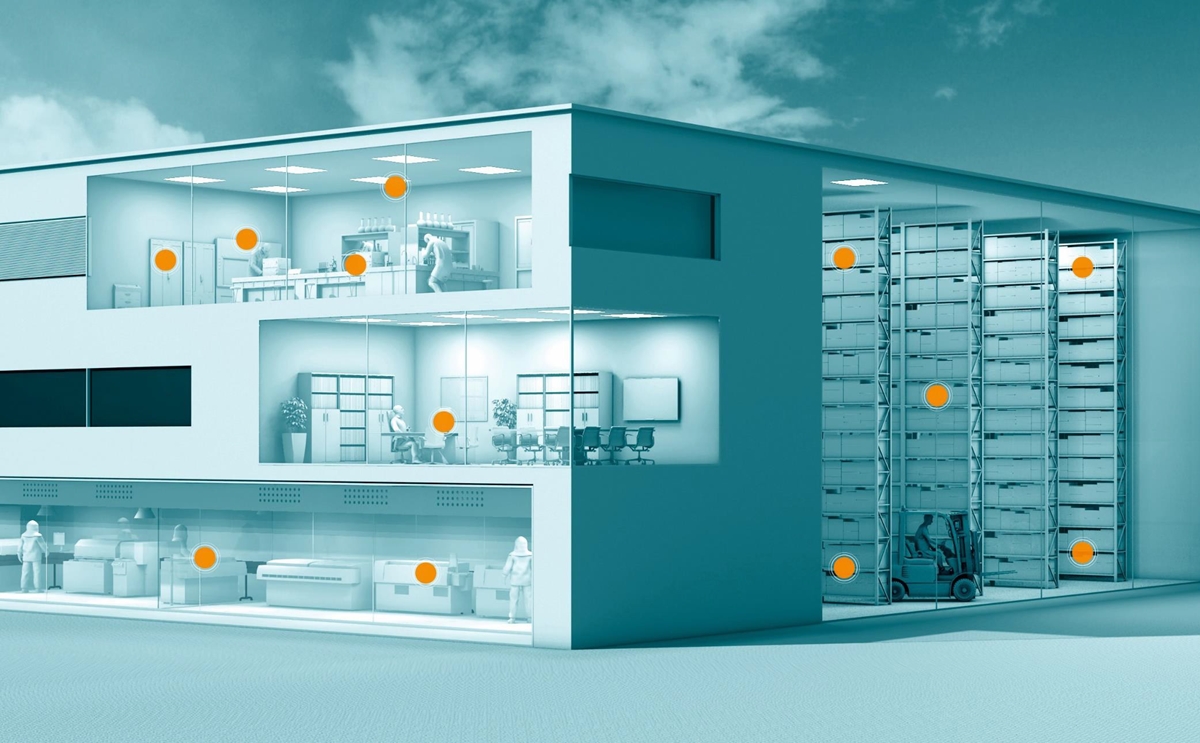In industries in which a product is sensitive to changing temperatures, like pharmaceuticals and food service, it is essential that the products are kept in a temperature-controlled storage area.
Ensuring that the entirety of a storage area maintains a safe temperature for sensitive products requires that the temperature range within the area is recorded. The temperature distribution can vary, so it is not enough to have a thermometer in the storage area recording the average temperature.
This process can be completed by professionals within the industries with the right equipment, or they can hire engineers. The tests that are conducted are part of a process called temperature mapping.
What is temperature mapping, and why is it important?
Temperature mapping involves the expert assessment of storage facilities, refrigerators and cold rooms, identifying where limits are required and installing the equipment to monitor them.
Temperature mapping is the process of recording temperatures in several locations of a storage area. This is accomplished by installing multiple electronic sensors, which log the changing temperatures of a small area within a building.
Temperature mapping is most commonly used by pharmaceutical companies and the food service industry because many foods and drugs need to be kept at specific temperatures. If a temperature-sensitive product becomes too hot or too cold, it can become ineffective or even unsafe when consumed. Temperature mapping is essential for certain industries to maintain safety and quality standards.
Some people may assume that a freezer or other temperature-controlled storage unit maintains a consistent temperature and does not need temperature monitoring, but this is a mistake. Opening and closing storage areas can alter the temperature, and the climate of a storage area can also change if the heating or cooling system malfunctions even slightly.

How do professionals carry out a temperature mapping study?
Temperature mapping should be conducted in a storage area before it is used. This will ensure that the area adheres to regulatory requirements and that the products that are to be stored in the area will not be harmed by temperature changes. A company may also choose to collect temperature data after the original survey to ensure that they are maintaining proper climate control, which is best practice.
Before conducting thermal mapping, the professional should determine the best places within the area to install the temperature sensors. These include the spots that are predicted to be hotter or colder than the rest of the area, like a spot by the door, locations that are very high or low, crevices that are expected to be cluttered and places that get more or less sunlight.
After identifying areas of need, the professional must next decide how many devices are necessary and how far apart they should be. This is a more specific process than deciding the locations because the loggers must be placed in a pattern resembling a grid. Typically, the loggers are placed in two layers, but that depends on the size of the storage area. They should be placed in all corners of the space, with at least one logger in the center. This will ensure that the temperature distribution of the area is accurately recorded so that there is little to no missing temperature data.
Once the temperature sensors are strategically placed, they will map the climate changes at each point in the room over the course of several days. For large spaces, this could take about a week, but it could take as little as 48 hours for very confined spaces. The data will be presented as a graph, demonstrating the highest and lowest temperatures of various locations. This will give professionals insights into the factors that alter storage conditions, like air stratification, heating and cooling systems, the opening and closing of doors, the addition or subtraction of people or goods and more.
The temperature mapping will also reveal which areas are subject to the most temperature fluctuation. This is where the devices should be permanently moved so they can monitor those areas continuously. If the report indicates that certain areas of the room reach temperature levels that are outside of safe operating parameters, the engineers can either advise the business owners to not store goods in those spots, or they can adjust the placement of the equipment within the storage area.
“If a temperature-sensitive product becomes too hot or too cold, it can become ineffective or even unsafe when consumed. Temperature mapping is essential for certain industries to maintain safety and quality standards.”
How often should temperature mapping be performed?
It is required that temperature mapping is performed in a storage area before it is used for perishable products like food or drugs, according to the World Health Organisation. Whether or not temperature mapping should occur after the initial test, however, depends on several factors.
For example, if the initial temperature survey reveals that there are concerning areas within a storage unit, it is likely that the company should consistently monitor the temperature changes of the space to ensure that they never reach a dangerous level. If the sensor reports an unsafe temperature, the company should adjust their heating or cooling system or rearrange the locations in which the products are stored.
Additionally, it may be best for a restaurant or pharmaceutical company to conduct additional full temperature mapping exercises on a periodic basis. Concerns like the outdoor climate, changes in heating or cooling systems or variations in the type or amount of products being stored can create a need for semi-regular temperature mapping. The World Health Organisation recommends conducting a temperature mapping survey every three years in these cases.
What kinds of tests should be performed during temperature mapping?
In order to get results that reflect all of the factors that can affect the temperatures within a company’s storage units, certain tests should be conducted during temperature mapping.
For starters, a temperature distribution test should be performed while the storage area is empty, and it should be performed again while it is full. This will demonstrate how the temperature in the unit fluctuates based on its contents. Mapping the temperatures of the unit while it’s empty is not enough to ensure the safety of the products, as the results of the tests may be quite different after inventory is added.
Additionally, professionals should test how the temperatures within the storage unit fluctuate as a result of different events. This includes how the temperature increases or decreases with the doors and windows open as well as when there are many people or products in the unit. They should also test how the temperature fluctuates in the unit as the heating and cooling systems give off more or less heat in case they malfunction in the future. Finally, it is important that the engineers test how the temperatures inside of the unit will change if the unit is powered off. This will inform the company owners of how quickly they must act in the event of a power outage or the unit breaking down.
What kind of equipment is needed for temperature mapping?
To conduct a temperature mapping survey, a professional needs multiple temperature sensors as well as computer software to analyse the data. Testo provides both of those products, as well as services to assist with installation and execution.
Temperature mapping within the food service industry and the pharmaceutical industry vary slightly based on different needs. Testo provides complete solutions for both of these industries. Owners of companies within these industries can task their own staff with conducting temperature mapping, or they can turn to a professional engineer. Either way, Testo can point you in the right direction for your temperature mapping needs.
For more information on temperature mapping, contact us today.









 Reduce cooking oil costs while ensuring quality
Reduce cooking oil costs while ensuring quality Expert knowledge on CO2 monitoring
Expert knowledge on CO2 monitoring Refrigeration knowledge - in 3 modules
Refrigeration knowledge - in 3 modules



